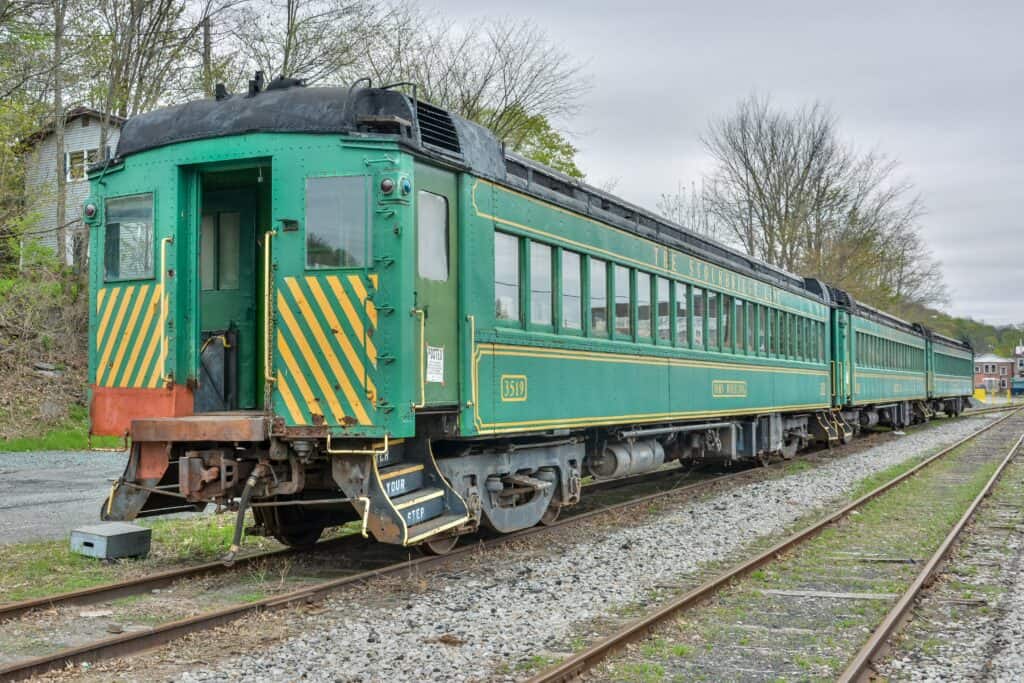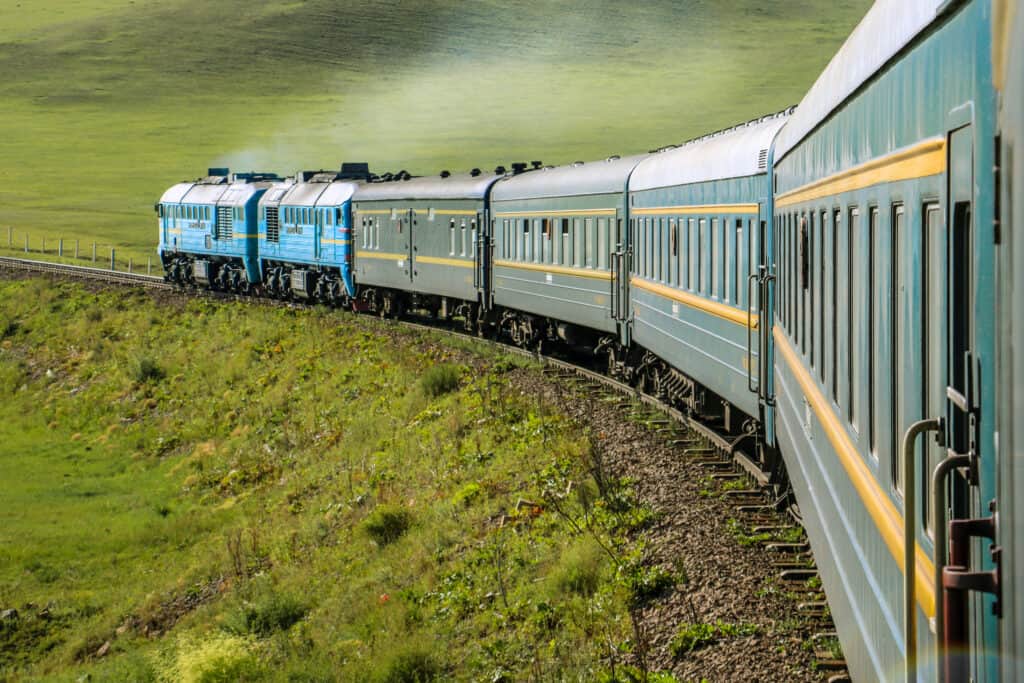Do you enjoy traveling by train? If so, you’ve probably wondered about the inception of trains or fantasized about riding on the world’s longest train.
Since their invention, trains have significantly altered daily travel, global economies, and human expansion. Trains have helped us advance civilization, from the first steam train to roll over the railways of industrial England to the modern bullet trains carrying thousands of passengers at incredible speeds.
People were concerned that the first steam train, built in 1804, would be too fast for passengers to breathe or that the vibrations would knock them out. However, by the 1850s, passengers were moving at unprecedented 50 mph or higher speeds.
In addition to providing convenient and affordable transportation, trains enabled the growth and development of new cities and jobs. The cost of living was also reduced because agricultural produce, clothes, and other goods could now be moved between cities in hours as opposed to days. Building tracks or mining for coal to power the steam engines were two of the jobs that people could find.
The Stourbridge Lion was the first foreign-built locomotive to be operated within the United States. The steam locomotive was shipped to New York in 1829, but its weight of 7.5 tons was greater than the 4.5 tons capacity of the tracks. This made passenger transport impossible.
Although trains may seem a bit antiquated now, they are not what they were 200 years ago. We now have high-speed trains that can travel 20–30 times more quickly than the first set of trains. As a convenient form of daily transportation for many people, trains have developed and grown.

The Stourbridge
Lion
was the first foreign-built locomotive to be operated within the United States.
©Alizada Studios/Shutterstock.com
What is the Longest Train Ever?
The Australian BHP Iron Ore is the longest train ever recorded in history at approximately 4.6 miles (7.353 km). In the Pilbara region of Western Australia, BHP owns and runs the Mount Newman railway. This is a private rail network designed to transport iron ore. The Goldsworthy railway is the other of the two rail lines that BHP runs in the Pilbara.
The 7.3 kilometers long BHP Iron Ore on the Mount Newman line set a new world record for the longest and heaviest freight train in June 2001. Eight strong General Electric AC6000CW diesel locomotives propelled this long-distance freight train. It covered about 275 kilometers (171 miles) between Yandi mine and Port Hedland in Western Australia.
The journey lasted about 10 hours and 4 minutes. This was because a faulty coupler that parted during the climb over the Chichester Ranges delayed it by 4 hours and 40 minutes. Following the repairs, it continued the rest of the way without any further issues.
Of course, it gets more interesting. Driven by a single driver, the line’s 99,734-ton, 682-car train was able to carry 82,000 tons (181 million pounds) of iron ore. With its length of 7,300 meters, the Australian BHP Iron Ore can fit about 24 Eiffel Towers. For context, the Eiffel Tower is about 300 meters tall. To put the weight of this train into perspective, it is the same weight as about 402 Statues of Liberty. (The Statue of Liberty weighs 450,000 pounds or 225 tons).
It’s important to note that the BHP already held the record for the heaviest train on May 28, 1996, with a 10-loco 540-wagon special, grossing 72191 tons. In 2001, it set a new record itself and beat the previous record set by South Africa in 1991 for the longest train. This was a 71600-ton train that ran on the South African iron ore line between Sishen and Saldanha in 1991. It had 660 wagons in it and was 7200 meters long, being pulled by 9 electric and 7 diesel locomotives.
Given Australia’s long history and track record for having an excellent railroad sector, the country’s record was not unexpected. The famous Ghan, which has been regarded as one of the greatest passenger trains in the world, is a living legend in Australia’s rail history.
The legend dates back to 1929 when it ran on the Central Australian Railway. The train was referred to as “The Afghan Express” during that historic trip before being abbreviated to “The Ghan.” It travels the same route that early Afghan camel importers did more than 100 years ago.
It’s now a brand name associated with experiential tourism passenger train service that connects Australia’s northern and southern coasts.
With an average length of 774 meters, the train covers 2,979 kilometers in 53 hours and 15 minutes. This is done on a weekly basis along the Adelaide-Darwin rail corridor. It travels through Adelaide, Alice Springs, and Darwin with scheduled stops for touring passengers.
Longest Train Route in the World
The China-Europe Block Train is the longest rail route in the world, having surpassed the Trans-Siberian railway (5,772 miles) and the Moscow-to-Beijing (4,340 miles) train. It is 8,111 miles long (13,000 kilometers), travels through eight different countries, and can stretch three times from Florida to Washington.
Also called Yixinou, the 82-car freight train departs from Yiwu, a trading hub in eastern China. It then travels through Kazakhstan, Russia, Belarus, Poland, Germany, and France before arriving at the Abroñigal freight terminal in Madrid, Spain, 21 days later.
While Kazakhstan, Russia, and Belarus use the Russian gauge, China, Poland, and Western Europe use the Standard gauge, and Spain uses the even wider Iberian gauge.
In contrast, a sea voyage would take six weeks. Using the road would result in roughly three times as much pollution (114 tons of Carbon Dioxide against 44 tons by rail).
Longest Passenger Train Route in the World
Going on the Trans-Siberian railway is a ride of a lifetime for many lovers of train travel. 1916 saw the official opening of the Trans-Siberian Railway, which is still in use today. You will travel across 87 significant cities, 3 nations, and 2 continents using the Trans-Siberian rail line.
It is the world’s longest passenger train route which links Western Russia to the Far East of Russia. At a track length of 5,772 miles, the Trans-Siberian line travels through 8 time zones and it takes about 7 days to complete the journey. Some of the cities along the route include; St. Petersburg, Novosibirsk., Ulan Bator, Harbin, and Beijing.

The Trans-Siberian Express is the longest passenger train on earth, with a railway spanning 3 nations, 2 continents, and 5,772 miles.
©Yannik Photography/Shutterstock.com
Longest Uninterrupted Train Journey
This is for those who seek extraordinary adventures. The world’s longest non-stop train route, which currently takes eight days and covers 10267 km, runs between Moscow and Pyongyang. This is on the Trans-Siberian Railway and the North Korean State Railway.
The train ride will undoubtedly try your patience because it moves so slowly, but if you enjoy exploring the unknown, it will be an unforgettable experience.
With its breathtaking scenery, traveling the Trans-Siberian route is an amazing experience. However, passing through different cities uninterrupted can be difficult for many people. Keep in mind that booking a seat on a train that travels for a little over a week will cost some good money. You should also ensure that you’re fully prepared to guarantee a pleasurable trip.
Is There a Limit to the Length of Trains?
Over the years, trains have constantly gotten longer. Could there be a size limit?
Well, not exactly. There isn’t a set rule that prohibits trains from being longer than a certain length. There are factors, however, that can make achieving some sizes challenging or even impossible.
Before determining the maximum length of a train, a manufacturer must check out the number of tracks on which it will operate. The maximum train size will be restricted based on the length of the passing loop in areas where the majority of the railways are single-tracked, which is particularly noticeable.
In some cases, there are government-backed regulations that prohibit the blocking of grade crossings by railroads. Although not outrightly, these laws can restrict the maximum length of trains. It’s easy to determine how long a train has to be for it to obstruct a crossing for hours.
A manufacturer’s options for train length may also be constrained by temperature and weather. For instance, it is not advisable to assemble trains beyond certain measurements when the temperature is below freezing.
When there’s so much pressure on a coupling and braking system that a conductor can’t operate a train properly, especially on steep slopes, a manufacturer doesn’t need to be told that the train is too big to control.
Conclusion
The development of BHP Iron ore is even more remarkable when you think about the limitations and functional constraints that the vehicle had to get around in order to function properly.
In as much as innovations like this help to advance human transportation and develop economies, overuse of longer models in densely populated areas may pose a societal hindrance.
The photo featured at the top of this post is © iStock.com/BeyondImages
Thank you for reading! Have some feedback for us? Contact the AZ Animals editorial team.







